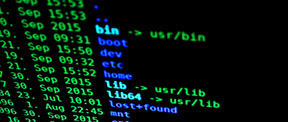**Exploring the Fascinating World of Linux Commands: findmnt**
In the vast and ever-evolving realm of Linux, there lies a hidden gem of a command that often goes unnoticed amidst the more popular contenders like ls, find, and tree. This unsung hero is known as findmnt, a powerful tool that provides detailed information about mounted filesystems. In this blog post, we will embark on a journey to unravel the mysteries of findmnt, showcasing its versatility and demonstrating its practical applications in various scenarios.
**Unveiling the Essence of findmnt**
At its core, findmnt is a command-line utility designed to furnish users with comprehensive information regarding mounted filesystems, including their mount points, types, options, and other pertinent details. Its primary function is to facilitate the exploration and management of storage devices and partitions, enabling users to gain a deeper understanding of their system’s file structure.
**Syntax and Usage:**
The syntax of findmnt is relatively straightforward, making it accessible to both novice and experienced Linux users. The basic format of the command is as follows:
“`
findmnt [options] [mountpoint/device/label]
“`
To delve into the depths of its capabilities, let’s delve into some practical examples that illustrate the versatility of findmnt:
**1. Retrieving a Comprehensive List of Mounted Filesystems:**
To obtain a comprehensive list of all mounted filesystems, simply execute the following command:
“`
findmnt
“`
This command will provide a detailed output displaying information such as mount points, device names, filesystem types, and mount options for each mounted filesystem.
**2. Exploring a Specific Mount Point:**
To gather detailed information about a particular mount point, specify it as an argument to findmnt. For instance, to examine the mount point “/home,” use the following command:
“`
findmnt /home
“`
This will present information specific to the “/home” mount point, including the device it is mounted on, its filesystem type, and any active mount options.
**3. Identifying the Mount Point for a Device:**
If you wish to determine the mount point associated with a particular device, simply specify the device name as an argument to findmnt. For example, to find the mount point for the device “/dev/sda1,” use the following command:
“`
findmnt /dev/sda1
“`
This will reveal the mount point where the specified device is currently mounted.
**4. Locating Filesystems by Label:**
In cases where you know the label of a filesystem but not its mount point, findmnt can come to your rescue. By providing the label as an argument, you can easily locate the corresponding mount point. For instance, to find the mount point for a filesystem with the label “MyData,” use the following command:
“`
findmnt -l MyData
“`
This will display the mount point where the filesystem with the specified label is mounted.
**Conclusion:**
findmnt is a powerful and versatile command that provides invaluable insights into the intricate world of mounted filesystems in Linux. Its ability to retrieve detailed information, explore specific mount points, identify devices by their mount points, and locate filesystems by labels makes it an indispensable tool for system administrators, power users, and anyone seeking a deeper understanding of their system’s storage structure. So, the next time you embark on a Linux adventure, remember the hidden gem of findmnt and unlock the wealth of knowledge it holds.
